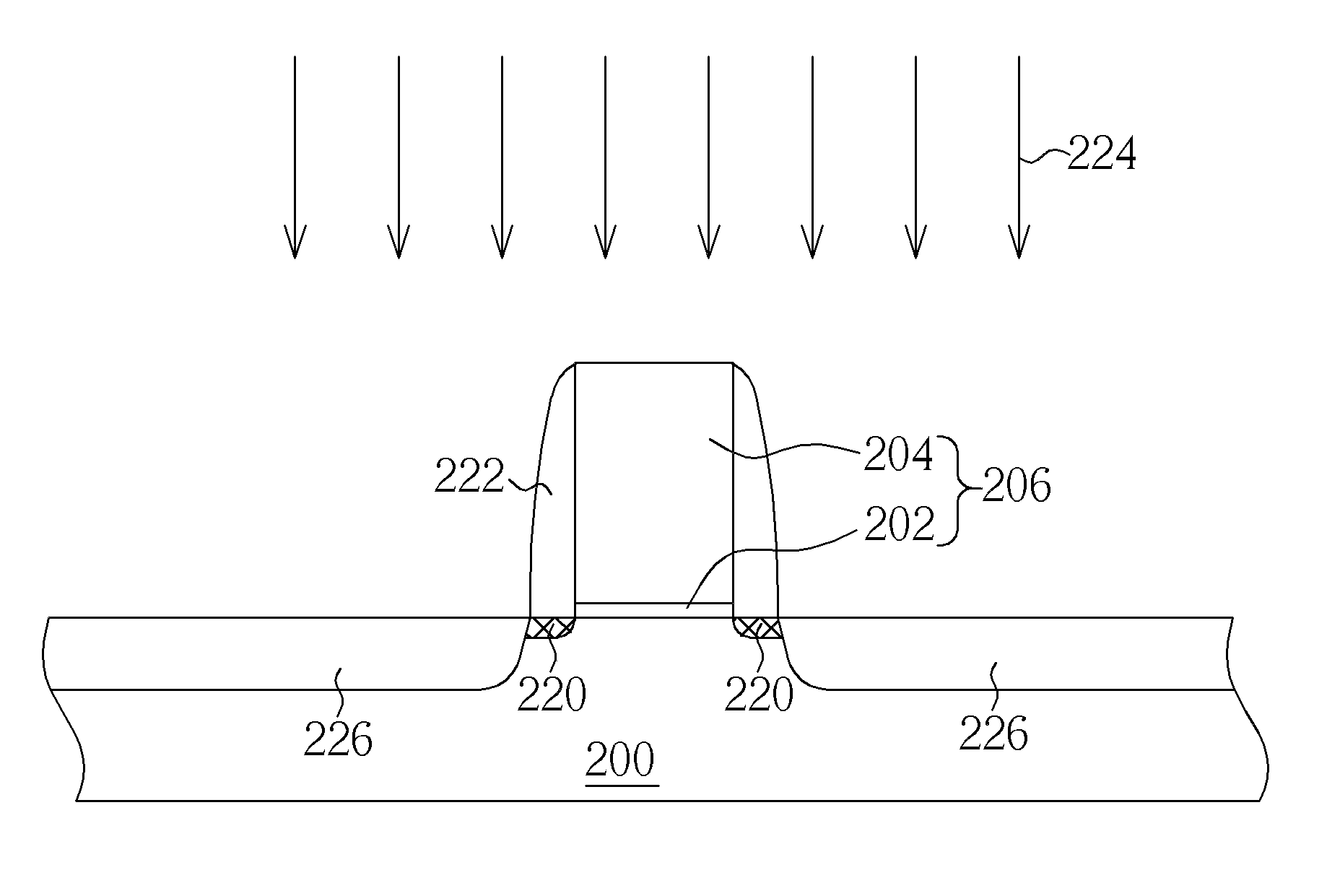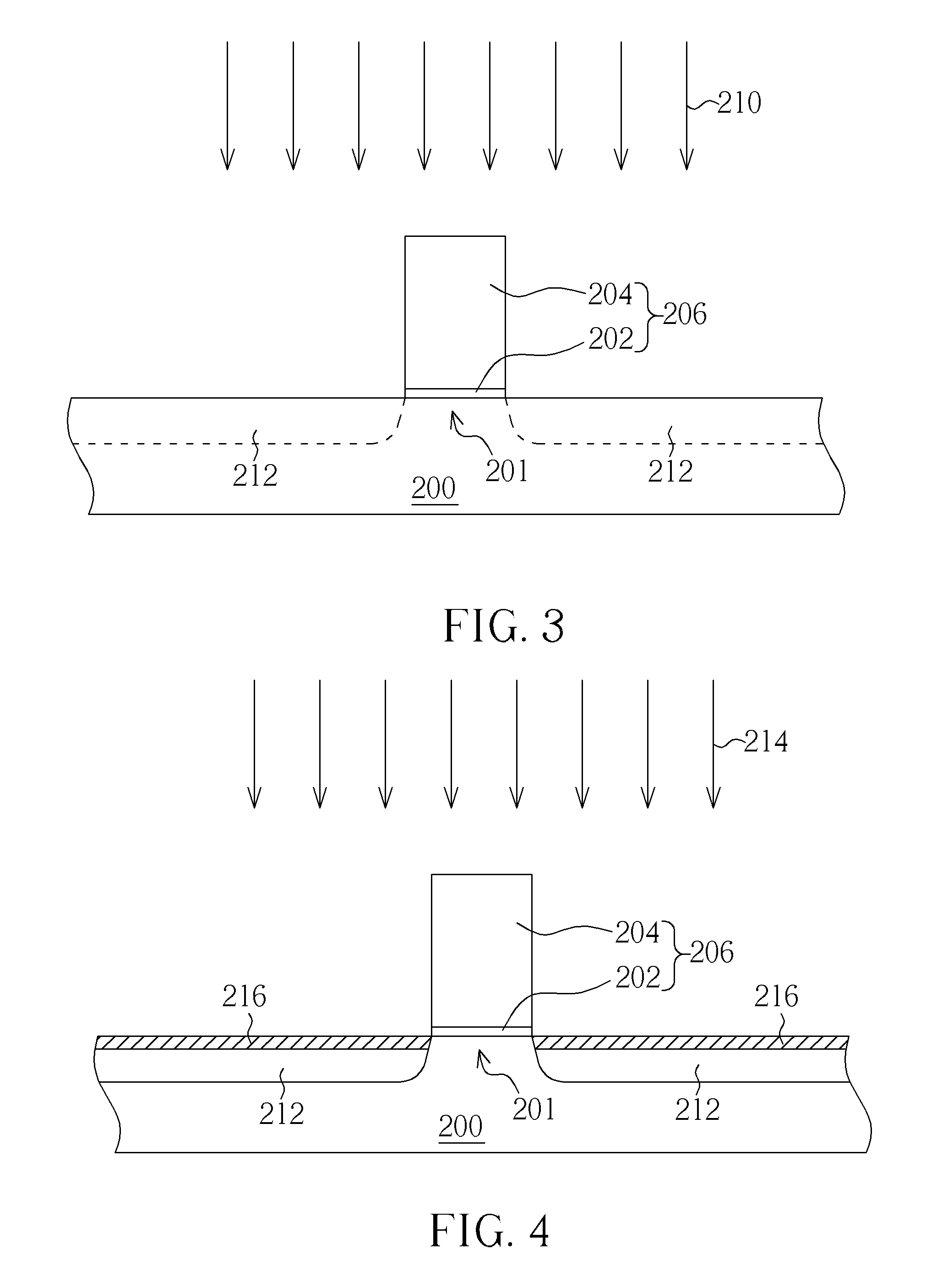Method of forming a MOS transistor
a technology of mos transistor and mos, which is applied in the direction of transistors, electrical devices, basic electric elements, etc., can solve the problems of reducing access resistance, difficult control of junction depth, and reducing access resistance, so as to improve the short channel effect, the effect of co-existing dopants and good junction profil
- Summary
- Abstract
- Description
- Claims
- Application Information
AI Technical Summary
Benefits of technology
Problems solved by technology
Method used
Image
Examples
Embodiment Construction
[0024]Refer to FIGS. 2 to 6 for illustration of an embodiment according to the present invention. FIG. 2 is a flow chart showing the method of forming a MOS transistor according to the present invention. The method of forming a MOS transistor of the embodiment according to the present invention comprises the steps as follows. A substrate having a gate, a source region and a drain region, and a channel region is provided. A pre-amorphization 301 is performed to form an amorphized region in the source region and the drain region, respectively. A co-implantation 302 is performed to implant a carbon co-implant within the source region and the drain region. A light ion implantation 303 is performed to form a doped region in the source region and the drain region. A spacer is formed on the sidewall of the gate. A source / drain ion implantation 304 is performed to form a doped region. An anneal process 305 is performed to activate the dopants, regrow the amorphized regions to a substantiall...
PUM
 Login to View More
Login to View More Abstract
Description
Claims
Application Information
 Login to View More
Login to View More - Generate Ideas
- Intellectual Property
- Life Sciences
- Materials
- Tech Scout
- Unparalleled Data Quality
- Higher Quality Content
- 60% Fewer Hallucinations
Browse by: Latest US Patents, China's latest patents, Technical Efficacy Thesaurus, Application Domain, Technology Topic, Popular Technical Reports.
© 2025 PatSnap. All rights reserved.Legal|Privacy policy|Modern Slavery Act Transparency Statement|Sitemap|About US| Contact US: help@patsnap.com



